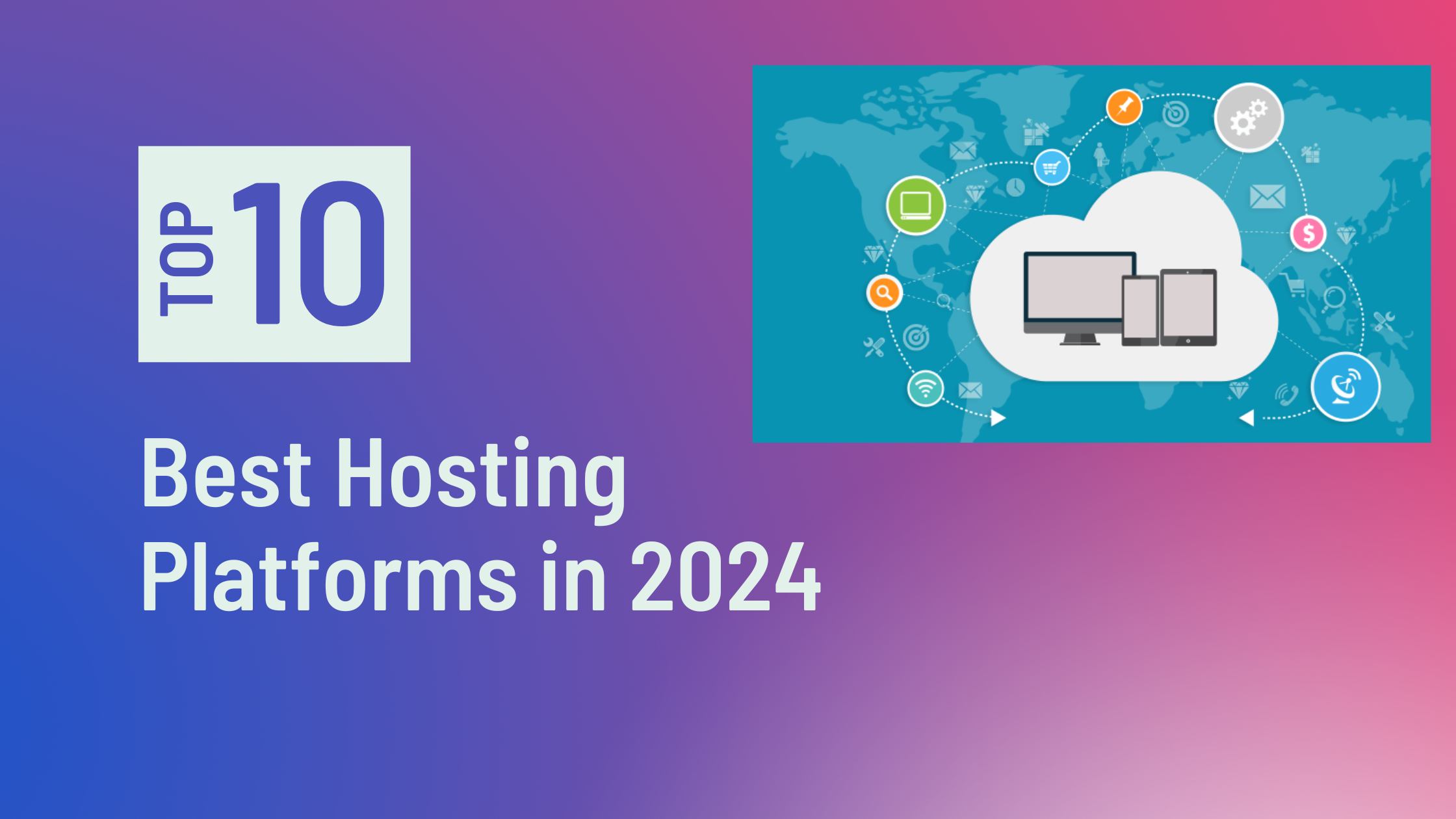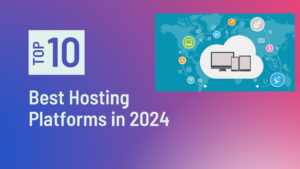
In the last decade, the digital realm has experienced a transformative shift.
With the advent of faster internet, the boom of e-commerce, and the global acceptance of online transactions, we've seen an astonishing rise in the creation and sale of digital products. From eBooks and online courses to software and downloadable art, digital products have reshaped how we conceive goods and commerce.
According to Statista, the e-commerce sector has been growing at an average rate of over 20% annually, much of which can be attributed to the burgeoning digital product niche. This rise is not just a fleeting trend but a paradigm shift. The digital marketplace offers scalability, cost efficiency, and global reach, attributes that physical products often struggle with.
Yet, with great potential comes great competition. Today's online ecosystem is brimming with entrepreneurs and creators, each offering their unique digital solutions. But having a great product isn't enough. It's akin to having a masterpiece locked in a vault; its value is realized only when it's seen and appreciated.
This is where the art and science of marketing come into play. A robust and effective marketing strategy can unlock this vault, ensuring that your digital product doesn't just remain another file on the server but transforms into a solution for someone, somewhere who's been searching for it. As we delve into the intricacies of marketing digital products, remember: it's about connecting, communicating, and creating value in the vast digital marketplace.
Understanding Digital Product Dynamics

In the vast world of e-commerce, digital products have carved a niche for themselves. What sets them apart? The uniqueness of digital products lies not only in their intangibility but also in the versatility they offer.
Unlike physical goods, which come with logistical challenges—think storage, shipping, and manufacturing—digital products are infinitely scalable. Once you've created a digital product, there are no ‘additional' production costs. Every sale after the first is almost pure profit. According to a report from IBEF, the cost-efficiency and scalability of digital products have attracted a 15% increase in creators and sellers in the last year alone.
However, this isn't to say selling digital goods is a walk in the park. The very features that make them attractive also present unique challenges. Convincing a potential buyer of the product's value can be daunting without the tangibility. Unlike in a brick-and-mortar store where customers can feel or test a product, digital products rely heavily on effective presentation, trust-building, and customer testimonials.
The key advantage? Flexibility. Digital products can be updated, tweaked, and improved without massive overheads. Got feedback on your online course? You can incorporate it and release an updated version. Found an error in your eBook? A corrected version can be made available instantaneously. This dynamism keeps digital products ever-evolving, ensuring they stay relevant and valuable to the consumer.
The world of digital products is one of immense potential and unique challenges. Understanding these dynamics is the first step in creating a successful marketing strategy tailored to this digital landscape.
Start with Your Why: The Core of Your Marketing Strategy

In the bustling digital marketplace, getting caught up in the what and how of selling products is easy. What features does your product have? How does it stand out? However, if we take a leaf out of Simon Sinek's book, we'd start with a different question: Why?
Simon Sinek's “Golden Circle” concept is profound yet straightforward. At its core, the Golden Circle encourages businesses to begin with the ‘Why', then proceed to the ‘How', and finally the ‘What'. In a nutshell, people don't buy what you do; they buy why you do it.
So, what's your ‘Why'? Is it to empower budding entrepreneurs with top-notch digital tools? Or perhaps to provide unparalleled educational resources to the masses? Defining this purpose, cause, or belief is pivotal. It becomes the bedrock upon which you build your marketing narrative.
Starting with your ‘Why' does more than give direction to your marketing strategy; it helps forge an authentic connection with your potential customers. In today's age, where consumers are inundated with choices, authenticity becomes a differentiator. Customers are more inclined to engage with brands and products that resonate with their values and beliefs. They seek genuine stories, not just sales pitches.
Incorporating your ‘Why' into your marketing doesn't just make good strategic sense; it taps into the very core of human decision-making. It's about moving beyond transactions and fostering relationships. After all, a customer connected to your ‘Why' is more likely to become a loyal advocate than just another sale.
Identifying Your Target Audience: Know Who You're Selling To

Any marketing endeavor's success hinges on reaching and resonating with the right audience. And when it comes to marketing digital products, the importance of identifying and understanding your target audience cannot be overstated.
The digital landscape is vast, with a plethora of products vying for consumers' attention. However, not every consumer is the right fit for your product. This is where the significance of a well-defined target audience comes into play. By identifying your ideal customer, you can tailor your marketing efforts to address their specific needs, preferences, and challenges, ensuring a higher ROI for your efforts.
So, how do you zero in on your target audience? Start by creating buyer personas. These are semi-fictional representations of your ideal customers based on real data and market research. Consider demographics, behavior patterns, motivations, and goals. Are your potential customers young entrepreneurs? Or perhaps they're educators looking for digital resources? Each persona will have unique characteristics and needs.
Understanding your target audience also entails knowing where they spend their time online. Are they active on LinkedIn or do they frequent niche forums? Maybe they're ardent podcast listeners? By identifying these channels, you can position your marketing efforts where they're most likely to be seen and engaged with.
By honing in on your target audience, you ensure that your marketing messages reach the right ears. It's not just about broadcasting your product; it's about engaging in meaningful conversations with those who genuinely need and value what you have to offer.
Content Marketing: Establishing Trust and Authority

In the vast realm of digital marketing, content remains king. Not just any content, though, but high-quality, value-driven content tailored to address the needs and questions of your target audience. When done right, content marketing can be a game-changer for marketing digital products.
So, why is content marketing pivotal? Firstly, it provides a platform to demonstrate expertise. By sharing actionable tips, insights, or even behind-the-scenes looks into your product development, you're signaling to potential customers that you know your stuff. And in the digital space, where trust is a precious commodity, establishing authority is crucial.
Moreover, content marketing allows for engagement. It's a two-way street that fosters conversations and feedback and builds a community. Whether it's through blog comments, social media shares, or even webinar Q&As, these interactions are invaluable for understanding what resonates with your audience and what doesn't.
But the benefits don't end there. Content also plays a pivotal role in SEO, driving organic traffic to your site. High-quality, SEO-optimized content can rank on search engines, making your digital products discoverable by those who might not have heard of you otherwise. And given that 70% of marketers are actively investing in content marketing, it's evident that this isn't just a trend but a proven strategy.
Think of content marketing as a bridge. It connects you to potential customers, building trust, fostering relationships, and ultimately, driving sales. It's not just about selling; it's about adding value and establishing your brand in the digital marketplace.
Utilizing Social Media Platforms: Expanding Your Reach

The power of social media in today's digital marketing landscape is undeniable with billions of users scrolling through their feeds daily, platforms like Facebook, Instagram, Twitter, and LinkedIn present unique opportunities to showcase and market digital products to a vast audience.
But it's not just about sheer numbers. Social media allows brands to engage in direct conversations with their audience, gather feedback, and create community-driven marketing campaigns. This personalized touch can significantly amplify the impact of your marketing efforts.
A study by eMarketer showed that in 2020, nearly 3.23 billion people worldwide used social networks. This number is predicted to grow, making it crucial for brands to have a robust social media strategy in place.
However, with great power comes great responsibility. Brands must ensure that their social media presence aligns with their brand values and ethos. It's easy to get caught up in the frenzy of viral marketing, but remember, quality over quantity always wins in the long run. Crafting thoughtful, engaging, and authentic content that resonates with your target audience will always be more effective than mass-produced, generic posts.
In essence, while social media offers a vast platform for visibility, its true strength lies in fostering genuine connections. As you navigate the social media waters, remember to stay true to your brand's voice, engage authentically, and use these platforms as tools to truly connect with your audience rather than just another advertising billboard.
Leveraging Email Marketing: Direct and Personalized Communication

In the evolving realm of digital marketing, email remains one of the most powerful tools for building personal connections with your audience. While some might believe that email marketing is becoming outdated, the numbers say otherwise. According to a report by Statista, there were over 4 billion email users in 2020, and this figure is expected to climb to 4.6 billion by 2025.
So, why is email such an effective tool? The magic of email marketing lies in its directness. It's a platform where you can speak one-on-one with your audience, devoid of the distractions often found on social media platforms. This makes your messages more intimate and personal.
Moreover, for digital product creators, email lists can be goldmines. These are groups of individuals who have expressed a clear interest in your product or niche. You can turn potential customers into loyal patrons by offering valuable content, exclusive deals, or sneak peeks into upcoming products. However, it's essential to keep the communication relevant and avoid bombarding your subscribers with incessant promotions. The key is balance.
Remember, email marketing invites you into someone's personal space—their inbox. This invitation is a privilege. Respect, value, and most importantly, use it to provide value. In return, you'll find a loyal audience ready and eager to explore your digital products.
Social Media Promotion: Expanding Your Reach

Social media platforms are like bustling digital marketplaces. According to a report, there are approximately 4.2 billion social media users worldwide, representing a staggering 53% of the global population. This massive pool of potential customers is a tantalizing prospect for any digital product creator.
However, not all social platforms serve the same audience or purpose. While Instagram might be a haven for lifestyle and visual products, LinkedIn could be the perfect platform for business-oriented tools. The key is identifying where your target audience hangs out and tailoring your promotional strategies accordingly.
Engaging content is the cornerstone of successful social media promotion. Whether it's an eye-catching infographic, a teaser video, or user testimonials, presenting your digital product in an appealing and relatable manner can significantly boost interest and sales. Collaborations, giveaways, and user-generated content can also help in amplifying your product's visibility and credibility.
While organic reach is vital, consider investing in paid promotions or ads for a targeted push, especially during product launches or special promotions. With precise targeting, you can ensure that your product reaches the eyes and ears of those most likely to be interested, maximizing your return on investment.
Affiliate Marketing: Leveraging External Promoters

Affiliate marketing has swiftly emerged as one of the most cost-effective methods to market products online. According to a Statista report, the U.S. alone spent over $5.9 billion on affiliate marketing in 2020, showcasing the magnitude of its influence.
Affiliate marketing involves partnering with individuals or entities (affiliates) who promote your digital product to their audience. In return, they earn a commission for every sale or action generated through their referral. This performance-based model ensures that you only pay for tangible results.
Recruiting the right affiliates is pivotal. Seek out influencers, bloggers, or entities that align with your product's niche. For instance, partnering with personal finance bloggers can be beneficial if you're selling a digital finance tool. Once onboarded, motivate them with competitive commissions, timely payments, and promotional resources. Regularly updating them on product enhancements and offering bonuses for top performers can also drive optimal results.
Use affiliate marketing platforms or software to track metrics like clicks, conversions, and the average value of sales. By closely observing affiliate performance, you can optimize strategies, identify top promoters, and ensure your product gets the maximum exposure.
Search Engine Optimization (SEO) & Paid Ads

In the dynamic world of digital marketing, two strategies reign supreme: Search Engine Optimization (SEO) and Paid Ads (like PPC). According to a BrightEdge study, organic search drives 53% of site traffic, underscoring its significance.
SEO entails optimizing product listings, descriptions, and associated content for digital products to rank higher on search engines. When your product listing appears organically in search results, it can significantly boost credibility and drive consistent traffic without ongoing ad expenditure. Ensure your product title, description, and meta tags contain relevant keywords. Regularly update content, maintain a mobile-responsive design, and prioritize fast-loading pages.
On the flip side, Paid Ads, especially Pay-Per-Click (PPC) ads, offer immediate visibility. Investing in platforms like Google Ads or Bing Ads can prominently display your digital product when potential customers search for related terms. Crafting compelling ad copy, targeting the right demographics, and setting an appropriate bid amount is crucial for PPC success. Moreover, with PPC, you have the flexibility to adjust campaigns based on real-time performance metrics, ensuring optimal return on investment.
Whether you lean towards SEO or Paid Ads, remember that both strategies can coexist. While SEO is a long-term play, Paid Ads can fill in the gaps, offering immediate visibility and conversions.
Post-Purchase Engagement: Beyond the Sale

In the digital marketplace, the sale is just the beginning of your relationship with a customer. According to a Harvard Business Review article, increasing customer retention rates by 5% can increase profits by 25% to 95%. Hence, post-purchase engagement isn't just good to have; it's vital.
Firstly, consider upselling. This is about introducing the customer to a higher-end product than the one they purchased. For instance, if a customer bought a basic version of your digital course, you might pitch them the advanced edition with bonus content.
Then there's cross-selling. Here, you introduce customers to other products that complement what they've bought. For instance, if a customer purchased a digital photo editing tool, you might suggest a complementary e-book on advanced photo editing techniques.
Finally, don't forget about asking for reviews. Customer testimonials can serve as powerful endorsements, influencing prospective buyers and reinforcing your product's credibility. Ensure there's a simple, straightforward mechanism for satisfied customers to share their experiences.
Beyond these strategies, consider building a community around your digital product. This can be a forum, a dedicated social media group, or even regular webinars. Here, users can share tips, ask questions, and foster a sense of belonging, which further deepens their connection to your brand and product.
Measuring Success: Analytics and Key Performance Indicators (KPIs)

In the world of digital product marketing
as the saying goes, “If you can't measure it, you can't improve it.” Utilizing analytics and KPIs ensures you're not marketing in the dark. A study by McKinsey highlights that companies that leverage consumer behavior insights outperform peers by 85 percent in sales growth.
Start by understanding the essential metrics. These can range from the number of downloads or purchases of your digital product, average time users spend on your platform, customer lifetime value, and more. Each of these gives you a glimpse into how well you're meeting your marketing objectives.
However, these metrics are of little use if you can't track them. Hence, the importance of tools. Popular platforms like Google Analytics or Tableau offer deep dives into your data, providing actionable insights. For those into e-commerce, platforms like Shopify or WooCommerce also come integrated with powerful analytics tools.
Lastly, it's essential to stay agile. Digital marketing is an ever-evolving landscape, and strategies that work today might not be as effective tomorrow. Regularly adjusting your strategies based on data insights ensures you're always at the forefront, giving your digital product the best chance to succeed.
Conclusion
The digital landscape is always shifting, and as we've explored, the importance of an integrated marketing strategy for your digital products cannot be overstated. According to a Forbes report, companies that quickly adapt and evolve with these changes have the best chances of succeeding in the increasingly competitive online marketplace.
Throughout our journey, we've touched on a myriad of strategies, from understanding the core purpose behind your product to leveraging affiliate marketing, SEO techniques, post-purchase engagement, and the pivotal role of analytics. Each piece, while powerful on its own, becomes transformative when integrated into a holistic marketing approach.
However, the learning doesn't stop here. The world of digital product marketing is one of constant learning and adaptation. As technologies advance, new platforms emerge, and consumer behaviors shift, our strategies must evolve in tandem. Whether you're a seasoned marketer or just starting, the commitment to continuous learning is what will set you apart.
Looking to the future, we can anticipate even more innovations in how we market digital products. Virtual reality, augmented reality, and further advancements in artificial intelligence are just the tip of the iceberg. Embracing these changes and staying at the forefront of knowledge will ensure your digital products continue to reach, resonate with, and enrich the lives of your target audience.










